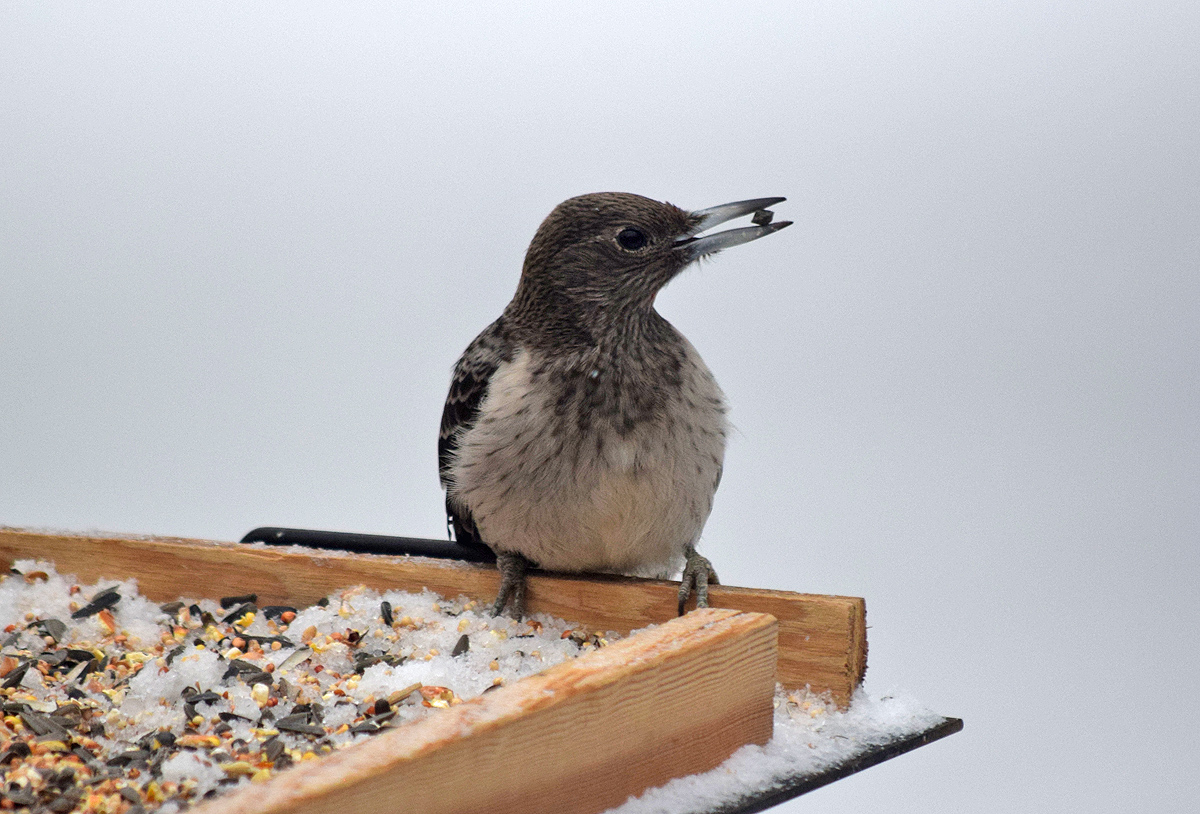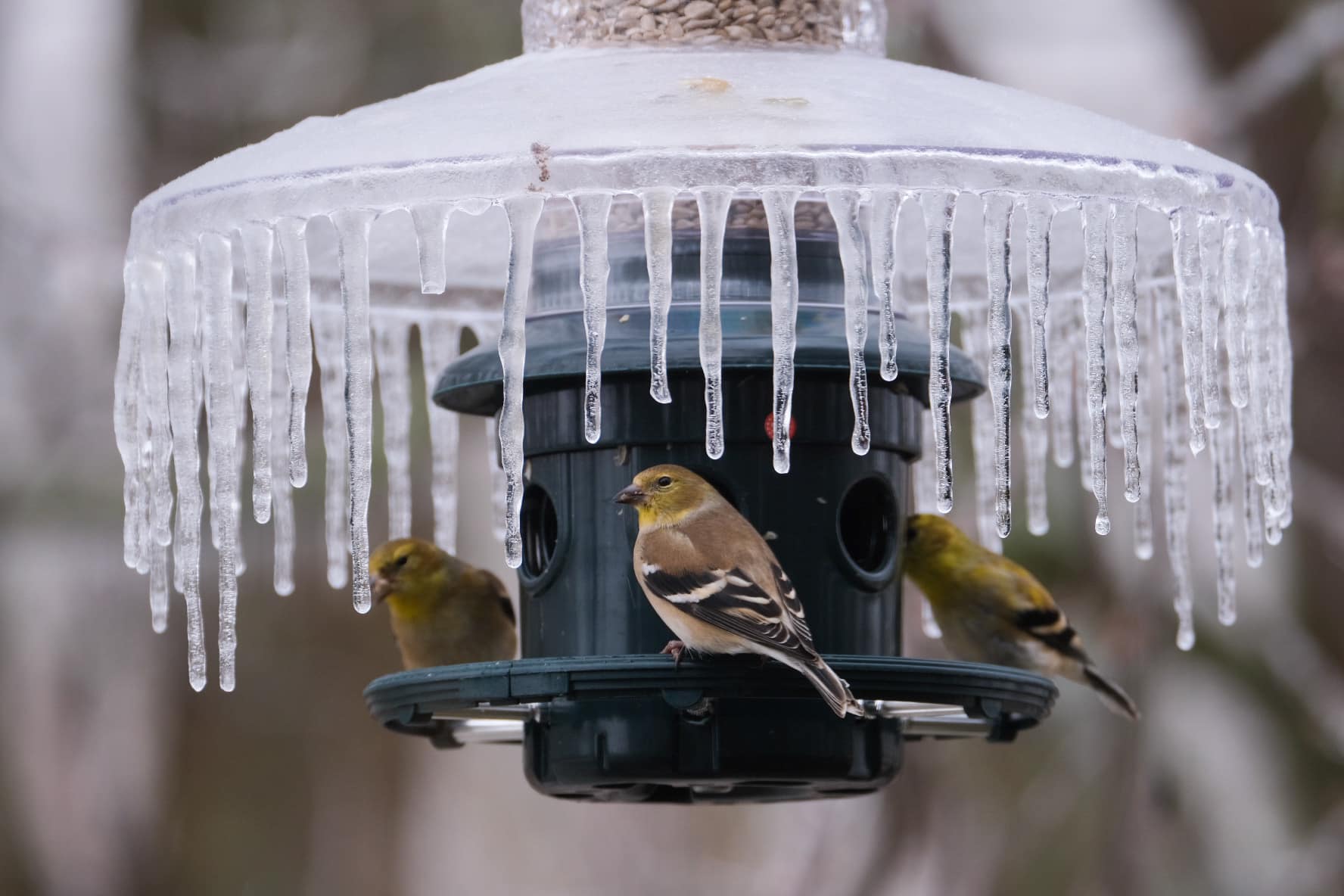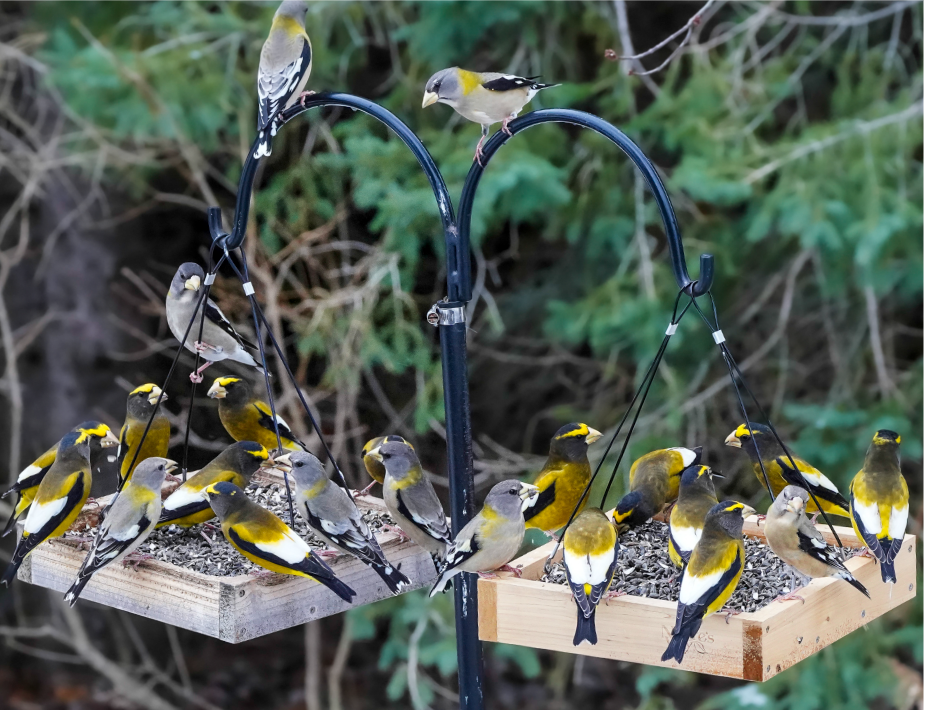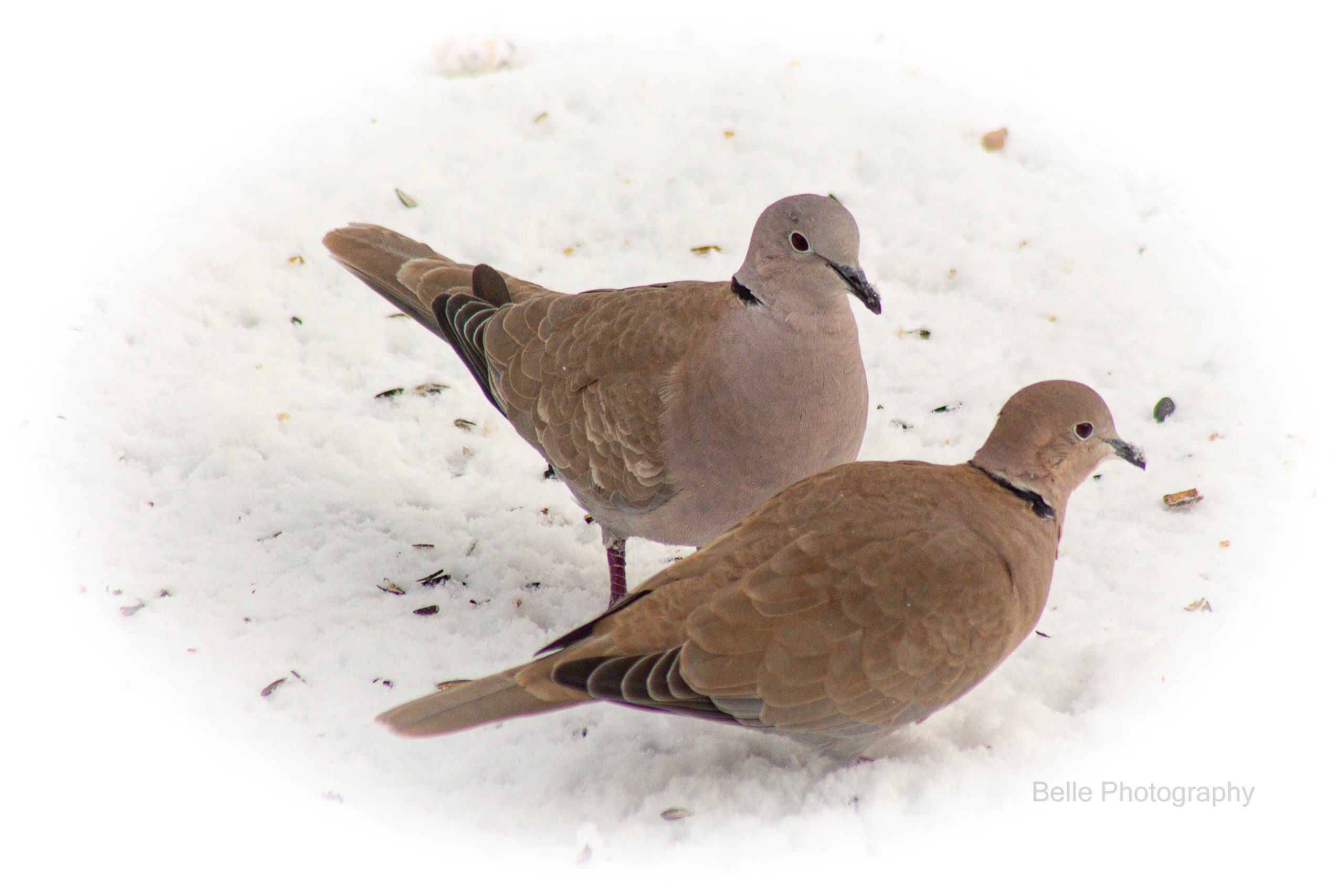By Kerrie Wilcox, Manager, Project FeederWatch, Birds Canada
This 36th season of FeederWatch brought some exciting new observations from participants across Canada. Thank you to everyone who contributed their support and time to the program – you made it a great year! You reported birds from 5739 locations this season (up from 5211 the previous season), giving us a fantastic view of how birds are doing across Canada.
Some exciting highlights are below – but stay tuned for BirdWatch Canada and for more details about the season.
The 2023-24 season starts November 1st. We hope you’ll join us for another exciting year! Learn more.
Project FeederWatch is made possible thanks to its amazing participants and our sponsors Armstrong Bird Food and Wild Birds Unlimited.
Canadian Roundup
The 2022-23 winter will be remembered for a good number of storms filled with snow, sleet, ice, and rain. Winter started off with extremely cold temperatures across much of Canada, but it took a couple of breaks in January and February, especially from southern Ontario through Newfoundland with less than average snowfall.
British Columbia
It was a great year for seeing fruit eating birds thanks to a great fruit crop. Large flocks of Bohemian Waxwings were reported in Prince George all season with 1,600 in one flock reported by Colleen Kelly. Bohemian Waxwings wander across Canada and the US in winter in search of fruit. Varied Thrush, another winter fruit eating bird, visited a high percentage of feeders this past winter. While their numbers vary considerably from year to year in BC, they visited over 39% of sites throughout the season – and a whopping 56% in December! Varied Thrush typically choose platform feeders, or food on the ground with suet, fruit, hulled sunflower, and meal worms being their top choices. Planting fruiting trees is a good way to help Varied Thrush feed throughout winter.
Other notable reports include a California Scrub-Jay in Metro Vancouver and Delta, and Harris’s Sparrows in Sooke and Vernon.
Alberta
The irruptive Pine Siskins, Common Redpolls, and Evening Grosbeaks all had an off year at feeders in Alberta with low numbers of sites reporting them. These irruptive finch species are nomadic and move in response to seed crops, which is why they appear at feeders in large numbers in some years and but are nearly absent in others. Good fruit crops in Alberta resulted in more participants reporting fruit eating species like American Robins, Cedar, and Bohemian Waxwings. Notable records include two Harris’s Sparrows at Eleanor Runnall’s feeders in Edmonton and a Spotted Towhee in Calgary by Orville Lammie.
Saskatchewan
Eurasian Collared-doves continued to expand their range into Saskatchewan with nearly 10% of sites reporting them this past season. This species is native to India, Sri Lanka, and Myanmar but escaped into the wild in the Bahamas during a pet shop robbery. From there, they expanded northwest to Florida and all the way to British Columbia! In Canada, they are now expanding into Alberta, Saskatchewan, and Manitoba. Some notable sightings included a Red-winged Blackbird in mid-November in Rock Point and a Varied Thrush near Port Albert.
Red-headed Woodpecker. Photo: Jill Dickin
Manitoba
It was a great winter for observing woodpeckers in Manitoba! Red-bellied Woodpeckers are continuing their range expansion north with several sites reporting them in Winnipeg. A Red-headed Woodpecker was reported in Winnipeg Beach – a rare bird in winter. Pileated Woodpeckers were reported at 17% of sites in late January. Hairy Woodpeckers were reported at nearly 60% of sites each week and Downy Woodpeckers at over 70% of sites.
Eurasian Collared-doves continued range expansion – appearing at five per cent of sites most of the season. Surprisingly there were reports of Northern Cardinals in Winnipeg, Teulon, and Brandon.
Ontario
It was a good year for seeing Evening Grosbeaks in Ontario to the delight of many FeederWatchers! They were consistently reported at 10 to 20% of sites. Large flocks of Common Redpoll’s were reported in northern Ontario and were exciting to see at Tammie Hache’s feeders, the Ontario FeederWatch Cam host.
There were a couple of very exciting owl reports at FeederWatch sites in Ontario this year. Seven Short-eared Owls were reported on December 26 by Richard Lapointe in Lennox and Addington County. He noted that Short-eared Owls live in their trees during the winter. They have several red cedars bunched together and the owls roost in these trees during the day when the snow arrives. Two Long-eared Owl were also reported in Bonnie Butcher in Ontario.
Rare winter sightings included a Yellow-rumped Warbler in Beaverton by Greg Jaski and in Manitouwadge by Tammie Hache. A Boreal Chickadee was report in Ottawa by TJWAY.
American Goldfinch. Photo: Kerrie Wilcox
Québec
Over 10% of sites in Quebec were reporting Tufted Titmice each week. There were no reports in 1988 when FeederWatch began, and less than one per cent 20 years ago. This species is expanding north likely as a result of climate warming and increased bird feeding. Arguably one of the cutest birds! They prefer peanuts, sunflower seeds, and safflower at feeders.
Some exciting records included a Dicksissel by Martin Cauchon, a Hermit Thrush by Micheline Bisson in Trois-Rivières, a Red-shouldered Hawk by Richard Gregson in Baie-d’Urfe, and a Scarlett Tanager by Peter Grondin in Dorval.
New Brunswick
It was a quiet year throughout the maritime provinces of New Brunswick, Nova Scotia, and Prince Edward Island for irruptive finches and as a result, few Feederwatch counts sites visited by Evening Grosbeaks, Pine Siskins, and Common Redpolls. Rare highlights included: a Scarlet Tanager by Roy LaPointe in Saint-Léonard, a Carolina Wren by Peter Smith in Saint John, and a Tufted Titmouse by Courtney Cameron in Fredericton.
Nova Scotia
Nova Scotia and much of the Maritimes experienced a come and go winter. This may be why there were some unusual overwintering birds including a Baltimore Oriole in Wilmot and several Pine and Yellow-rumped Warblers. These two warbler species are hardier than most and can survive cold temperatures and overwinter successfully. At feeders, they choose sunflower seeds, fruit, mealworms, sugar water, and suet.
Ruby-crowned Kinglets were reported by FeederWatchers in Lunenburg and Apple River.
Evening Grosbeak. Photo: Cathy Siekierko
Prince Edward Island
Birds that feed on fruiting shrubs in the winter (i.e., Bohemian and Cedar Waxwings, American Robins) were reported at very few Feederwatch sites this year, likely due to low fruit and berry crops after hurricane Fiona. Hurricane Fiona hit in late September when leaves and fruit were still on trees.
A Red-bellied Woodpecker was an exciting visitor. This species is expanding their range north!
Newfoundland and Labrador
Low numbers of all the irruptive finches were reported this winter. A few interesting sightings included a Dickcissel in November, a White-throated Sparrow and Song Sparrow in Saint Lawrence, and a Baltimore Oriole in St. John’s.
Far North
Black-capped Chickadees were reported at 90% of sites each week in the far north this season, making them the most reported bird. They have many adaptations for surviving in frigid temperatures including carefully hiding food items to eat later, using roost cavities at night, and the ability to go into nightly hypothermia to conserve energy.
Some notable sightings from the far north included an American Robin and Pine Siskin in Whitehorse, Yukon Territory.





